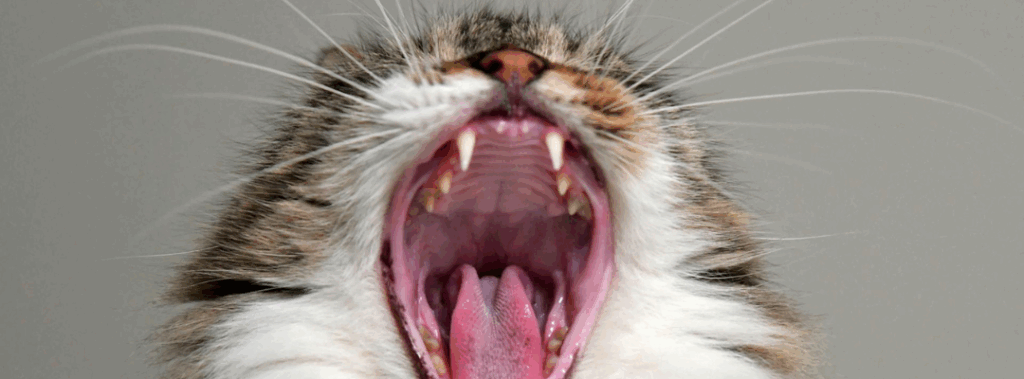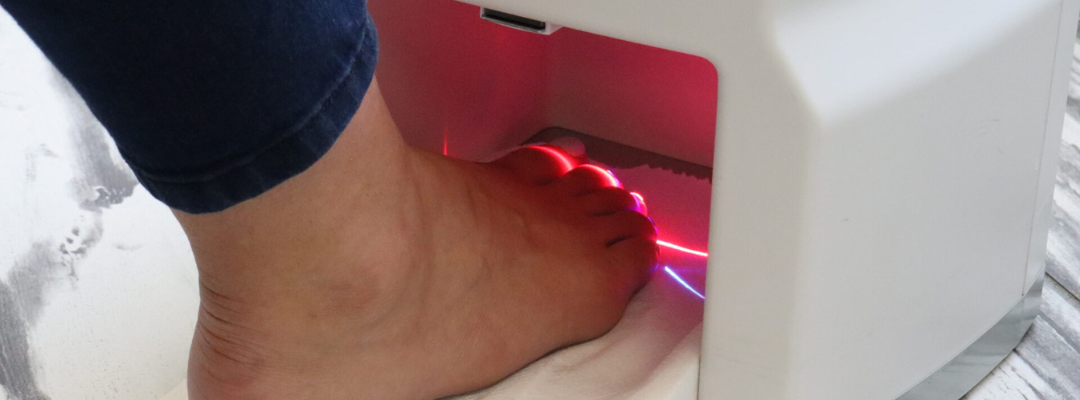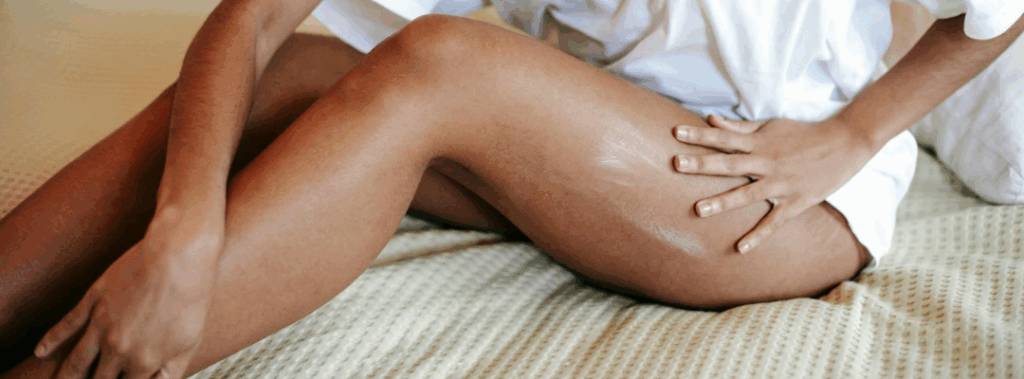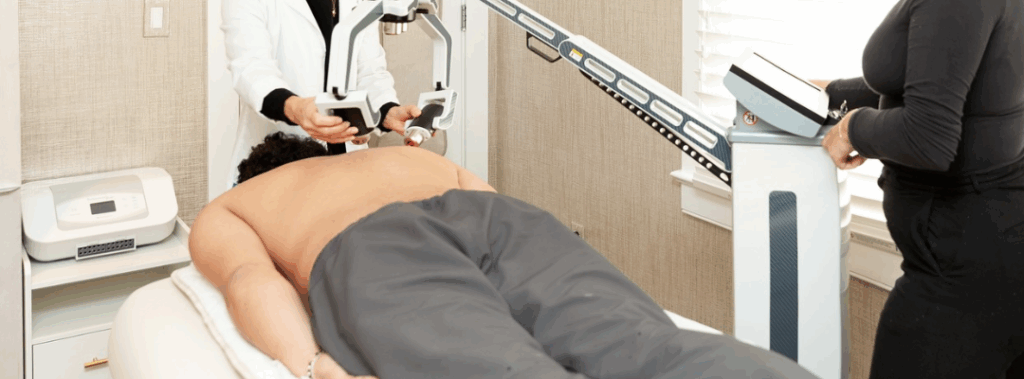
Nail fungus, or onychomycosis, is more common than many people realize. Affecting millions annually, this stubborn condition often leads to thick, discolored, and brittle nails that can be embarrassing and difficult to treat. While traditional remedies like topical ointments and oral antifungals remain standard, a growing number of patients are exploring laser therapies, especially low-level laser therapy (LLLT), as a gentle, non-invasive aid in managing nail fungus.
If you’re wondering how to get rid of nail fungus with minimal side effects and without systemic medications, read on to learn how LLLT may help.
What is Nail Fungus?
Nail fungus (onychomycosis) is a fungal infection that typically begins as a white or yellow spot under the tip of your fingernail or toenail. As the infection spreads, it can cause:
- Thickened nails
- Brittleness or crumbling at the edges
- Distorted shape
- Discoloration (yellow, brown, or white)
- Separation of the nail from the nail bed (onycholysis)
Fungal infections thrive in warm, moist environments, which makes feet particularly vulnerable – especially inside shoes.
What Causes Nail Fungus?
It is estimated that about 10% of the US population experiences nail fungus. Fungal nail infections can be triggered by various fungi, including dermatophytes, yeasts, and molds. They often begin following an athlete’s foot infection or after exposure in communal environments such as gyms or public pools.
You may be more likely to develop nail fungus if you:
- Are over age 60
- Have sweaty feet or wear closed shoes for long periods
- Walk barefoot in damp communal areas
- Have diabetes, circulation issues, or a weakened immune system
- Have a history of athlete’s foot or nail trauma
Understanding your risk can help you take preventive steps and choose the right treatment path when infection strikes.
How Laser Therapy Can Help Manage Nail Fungus
Low-level laser therapy (LLLT), also known as cold laser therapy, is a non-invasive approach that uses specific wavelengths of light to stimulate cellular function and support the body’s natural healing response – without generating heat or damaging tissue. In the case of nail fungus, LLLT targets the affected nail and surrounding tissue to help reduce fungal activity and support healthy nail regeneration over time.
The Erchonia Lunula Laser® is an FDA-cleared, non-thermal laser that targets the fungus that resides in and beneath the toenail, penetrating through the nail plate without harming the nail, surrounding skin, or underlying tissue. The Lunula laser uses two distinct wavelengths of photonic energy:
- Violet (405 nm): Targets and disrupts fungal pathogens within the nail and nail bed.
- Red (635 nm): Stimulates microcirculation and cellular repair, supporting new, clear nail growth.
By delivering these wavelengths simultaneously in a rotating pattern, the Lunula laser offers a multifaceted, innovative approach to nail fungus management. Its mechanism does not rely on heat, and no adverse effects have been reported on the nail bed, toe, or foot.
One of the most compelling reasons patients choose laser for nail fungus is its long-lasting support in managing infections. By promoting better nail integrity and supporting the body’s antifungal defense mechanisms, LLLT may aid in preventing recurrence when combined with good hygiene and maintenance.
Additional benefits:
- Avoids the systemic side effects associated with oral antifungal medications, such as liver toxicity and drug interactions
- Bypasses the limitations of topical treatments, which often struggle to penetrate the nail plate effectively
- Provides a safe and repeatable solution with no known adverse effects or downtime
- Can be used alongside other therapies, including topicals and hygiene practices, for a comprehensive treatment approach
- Has no risk of developing fungal resistance, unlike some antifungal drugs
What to Expect During Laser Nail Fungus Treatment
Patients often ask whether laser therapy hurts or requires downtime. Fortunately, LLLT for nail fungus is generally painless and well-tolerated. Here’s what to expect during a session:
The Procedure
You’ll sit comfortably while a trained provider places the laser device over the affected nail(s). With systems like the Lunula Laser®, the device operates automatically, projecting the laser light in a rotating pattern to ensure even coverage across the nail surface and into the surrounding tissue. The procedure is painless and typically lasts between 10 to 30 minutes, depending on the number of nails being treated.
There is no heat or burning sensation, and you won’t need any topical numbing agents or anesthesia. Most patients feel nothing at all during the session.
After the Procedure
One of the biggest advantages of LLLT is that there’s no downtime. Once your session is over, you’re free to go about your day as normal – there are no bandages, medications, or restrictions to follow.
While the procedure itself is quick, nail fungus recovery takes time. Because toenails grow slowly, visible improvements may not appear until several weeks or even months after treatment. The discolored or thickened portion of the nail must grow out and be replaced by new, healthy nail tissue, which happens gradually. Most treatment plans involve weekly or biweekly sessions until the desired improvement is observed.
With the Lunula laser, as little as four 12-minute sessions are needed to treat the affected area, and research has shown the laser treatment significantly increased clear nails over a 6 month period.
Comparing LLLT to Other Nail Fungus Treatments
Not all treatments are created equal. Here’s how LLLT stacks up against other options:
Topical Treatments
- Pros: Widely available; non-invasive.
- Cons: Often ineffective for moderate to severe infections due to poor nail penetration.
- Compliance: Requires consistent, long-term use (6–12 months or more).
Oral Antifungal Medications
- Pros: Systemic treatment can be effective for severe infections.
- Cons: Risk of side effects including liver toxicity, drug interactions, and digestive issues.
- Monitoring: Blood tests may be required to check liver function.
LLLT (Low-Level Laser Therapy)
- Pros: Painless, drug-free, no known systemic side effects, supports natural nail regrowth.
- Cons: May require multiple sessions; results may be gradual.
- Best For: Patients seeking non-pharmaceutical support or those with liver conditions or drug sensitivities.
LLLT may be especially appealing for individuals who have not responded well to medications or are looking to avoid long-term pharmaceutical use.
Additional Tips for Managing Nail Fungus
Combining hygiene best practices with supportive treatments like LLLT can improve your chances of long-term relief. In addition to LLLT, consider these practices to help reduce the risk of reinfection and maintain healthy nails:
- Keep feet clean and dry: Wash daily and dry thoroughly, especially between toes.
- Choose breathable footwear: Avoid tight, non-breathable shoes.
- Change socks daily: Especially if you sweat heavily.
- Disinfect nail tools and clippers: Fungal spores can linger on shared or reused instruments.
- Avoid walking barefoot in public areas: Wear flip-flops in locker rooms and pool decks.
- Use antifungal sprays or powders: Especially inside shoes.
- Clip nails straight across: And file down thickened areas to reduce pressure and improve topical treatment penetration.
Should You Use LLLT for Nail Fungus?
If you’re dealing with persistent or recurring nail fungus, you’re not alone, and you’re not without options. Laser for nail fungus presents a promising, gentle, and non-invasive tool in the fight against fungal infections. While it’s not a magic bullet, LLLT may support natural nail healing and healthier regrowth, especially when paired with other smart hygiene practices. Talk to your doctor, podiatrist, or dermatologist to see if LLLT is a good fit for your nail fungus treatment plan.



